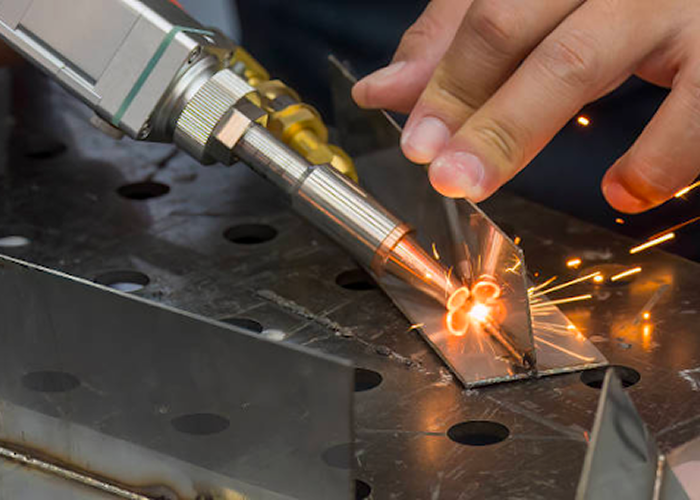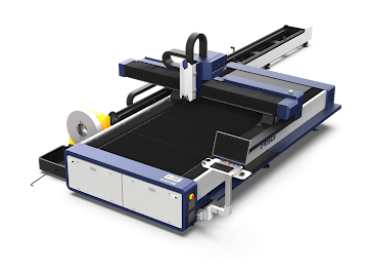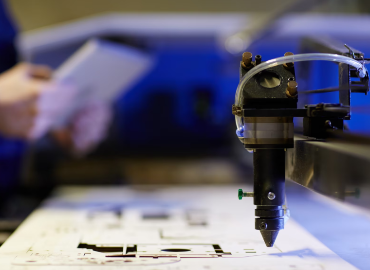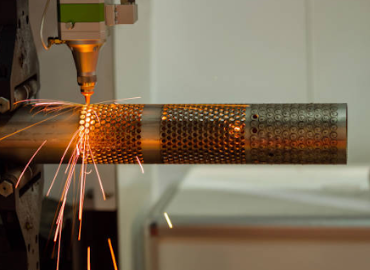Table of Contents
- Handheld Laser Welding Overview
- MIG Welding Overview
- Why Choose Handheld Laser Welding?
- Laser Technologies: A Trusted Partner in Laser Welding Solutions
- Conclusion
When it comes to industrial welding, technology choice significantly impacts productivity, quality, and operational costs. Among the most widely used welding methods are handheld laser welding and MIG (Metal Inert Gas) Welding. Both technologies have their place in different sectors, but understanding their functionalities, benefits, and challenges is crucial for choosing the right method for your business.
Laser Welding Vs MIG Welding Laser welding offers higher precision and faster speeds, ideal for intricate designs and quick production turnaround, while MIG welding is cost-effective.
Handheld Laser Welding Overview
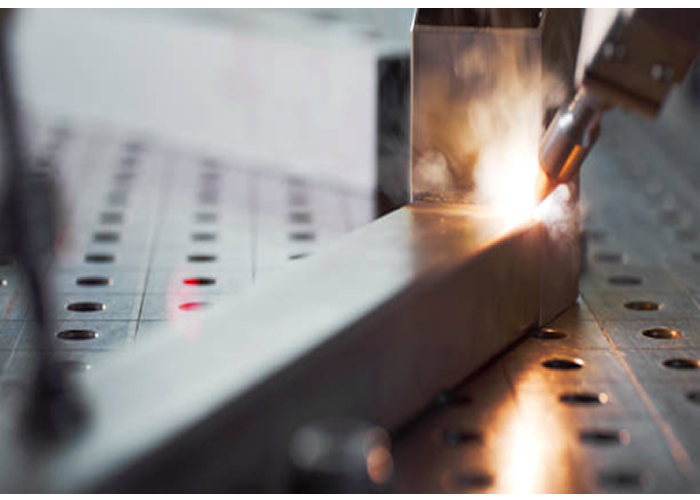
A concentrated laser beam is used in the extremely accurate process of laser welding to melt and fuse materials. Using this method, the laser is focused onto a small area, creating a high-energy density that melts the material where it comes into contact. Highly controlled heat input is made possible by the procedure, which minimises heat-affected zones and greatly lowers the possibility of material distortion, which is a typical issue with conventional welding techniques.
A noteworthy innovation in laser welding technology is the handheld laser welding system. It is a portable laser welding machine that operates directly, providing exceptional flexibility for various applications, especially in confined or intricate spaces.
Key Features of Handheld Laser Welding
1. Precision
Handheld laser welding offers exceptional precision, making it ideal for intricate designs and delicate materials. This high level of accuracy produces strong, clean welds with less post-processing required.
2. Minimal Heat Affected Zone (HAZ)
The surrounding material remains relatively unaffected because the area of heat generation is small. This minimises warping, distortion, and unwanted mechanical changes to the material's properties.
3. Speed
Handheld laser welding systems can perform high-speed welds, increasing the overall productivity of welding operations.
4. Clean Welds
Because laser welding produces less spatter and gives you more control over the fusion process, it usually requires less cleaning after the welding.
5. Versatility
They are highly versatile systems that can work with various materials like stainless steel, aluminium, and titanium. Such versatility makes them appropriate for different applications, from car manufacturing to electronics assembly.
Laser Technologies, a leading supplier of laser welding equipment, provides the best handheld laser welding systems that deliver high-performance results across different industries. Their laser technology provides efficiency, quality, and excellent after-sales service.
If a welding job needs the heat concentrated in a smaller area, which welding should be selected? Laser welding is a great choice for welding jobs requiring heat concentrated in a smaller area due to its ability to deliver focused heat energy.
MIG Welding Overview
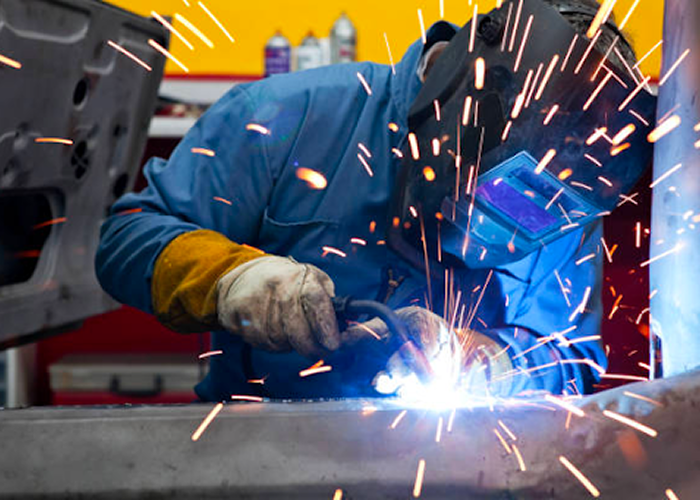
MIG welding, also known as Gas Metal Arc Welding (GMAW), is one of the most common welding processes used today. What is MIG welding? It includes passing a continuous wire electrode through a welding cannon while an inert shielding gas protects the molten weld pool from contamination. MIG welding is renowned for its versatility and ease of use, particularly in welding thicker materials.
Which type of welding is best for long continuous welds and is the most common type of industrial welding? For long continuous welds and as a common industrial welding process, metal-inert gas welding is ideal. MIG welding machines are often preferred for their efficiency and ability to produce high-quality welds at a fast pace.
Key Features of MIG Welding
1. Ease of Use
The simplicity of MIG welding is one of its main benefits. The process is relatively easy to learn, making it an attractive option for beginners and high-volume applications.
2. Versatility for Thick Materials
MIG welding is particularly effective for thicker materials, as the method generates sufficient heat to ensure strong, deep welds.
3. Continuous Welding
MIG welding allows operators to weld constantly without the need to stop and start the process. This feature increases productivity during high-volume tasks and decreases downtime.
4. Cost-Effective
MIG welding machines and consumables are often more economical than laser welding systems, making it a cost-effective solution for many firms, especially those working with less sophisticated materials or processes.
Drawbacks of MIG Welding
1. Heat Input and Distortion
MIG welding frequently causes the material to become overheated, which can cause distortion, especially in thin materials. This may require additional finishing processes such as grinding or polishing to ensure a clean finish.
2. Reduced Precision
MIG welding provides less precision than laser welding. The weld bead is often larger, and the process is less forgiving when it comes to intricate designs.
3. More Post-Weld Cleaning
MIG welding usually produces more spatter, which makes post-weld finishing and cleaning more necessary. This effort can increase the overall operational expenses.
Why Choose Handheld Laser Welding?
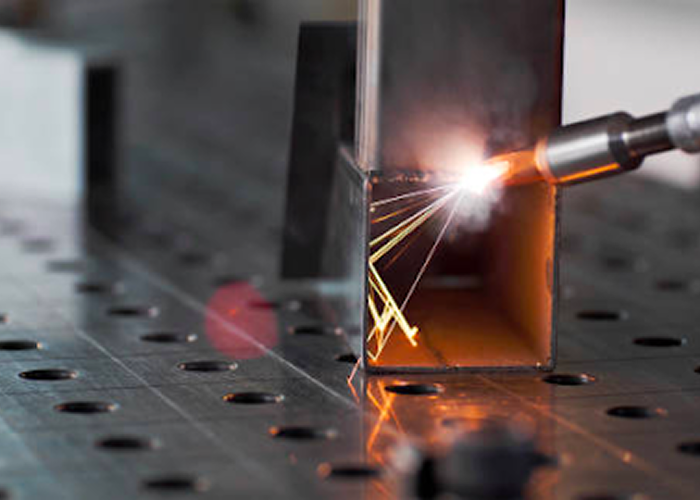
Laser welding vs. MIG welding, although MIG welding remains a popular choice in many industries, the benefits of handheld laser welding make it an increasingly compelling option for applications requiring high precision, minimal post-processing, and greater efficiency. Below are some of the reasons why companies are increasingly turning to handheld laser welding systems when it comes to laser welding vs. MIG welding.
1. Enhanced Precision and Accuracy
Handheld laser welding is ideal for jobs requiring high precision. The focused nature of the laser beam allows for extremely fine welds, which is crucial for delicate or intricate applications. For instance, in the electronics and jewellery industries, where small, precise welds are required, handheld laser welding stands out as a superior choice.
2. Reduced Distortion and Warping
The minimal heat-affected zone in laser welding means that there is less risk of distorting or warping the material, making it ideal for thin metals or highly sensitive components. In comparison, MIG welding often leads to more heat input, which can cause undesirable changes in the material’s shape or properties.
3. Faster Production Times
Laser welding systems are known for their speed. The ability to weld at a high speed reduces overall production time, which is a significant advantage in high-volume manufacturing environments. The increased speed also leads to better throughput, improving the efficiency of operations.
4. Cost Efficiency in the Long Term
While handheld laser welding machines may require a larger upfront investment compared to MIG welding machines, the long-term cost benefits are substantial. The precision and speed of laser welding reduce material waste, and the need for less post-processing further drives down costs. Additionally, the durability and low-maintenance nature of laser welding equipment contributes to its long-term cost-effectiveness.
5. Flexibility in Application
Handheld laser welding systems are highly versatile, making them suitable for a broad range of materials and thicknesses. Whether welding small parts or performing large-scale jobs, laser welding technology provides the flexibility to meet various industrial needs.
Laser Technologies: A Trusted Partner in Laser Welding Solutions
Laser Technologies is a prominent provider of laser welding systems that have redefined how businesses approach welding tasks. By offering advanced machines for handheld laser welding, laser technologies enable companies to adopt the latest technologies for enhanced productivity and superior results.
Key Benefits of Choosing Laser Technologies
1. State-of-the-Art Equipment
Laser Technologies offers some of the most advanced handheld laser welding systems in the industry, ensuring users benefit from the latest innovations in precision welding.
2. After-Sales Support
One of the standout features of Laser Technologies is its commitment to customer satisfaction through robust after-sales support. From installation and training to ongoing maintenance and troubleshooting, their team ensures that customers have everything they need to operate their systems effectively.
3. Global Reach and Expertise
With a global presence and a large customer base, Laser Technologies has gained a reputation for delivering reliable, high-performance products. Their solutions are trusted by businesses across various sectors, from automotive to aerospace.
4. Customisation
Understanding that every business has unique needs, Laser Technologies offers tailored solutions to meet specific operational requirements. Whether you need equipment for precision welding or high-speed production, they have the right system for you.
Conclusion
Both MIG and portable laser welding have a role in contemporary industry, but which one to use will mostly rely on the particular needs of your application. MIG welding is still used in fields where simplicity and cost-effectiveness are crucial, particularly when welding thicker materials and in large quantities. However, handheld laser welding is the best option for businesses looking for high-quality outputs with greater efficiency when it comes to accuracy, speed, and little post-processing.
Laser welding technology, particularly from reliable providers like Laser Technologies, offers a solution that satisfies the needs of various industries, including electronics, medical device production, automotive, and aerospace. Businesses may confidently transition to laser welding with the help of knowledgeable personnel and top-notch equipment, knowing they are investing in their operations' future.

